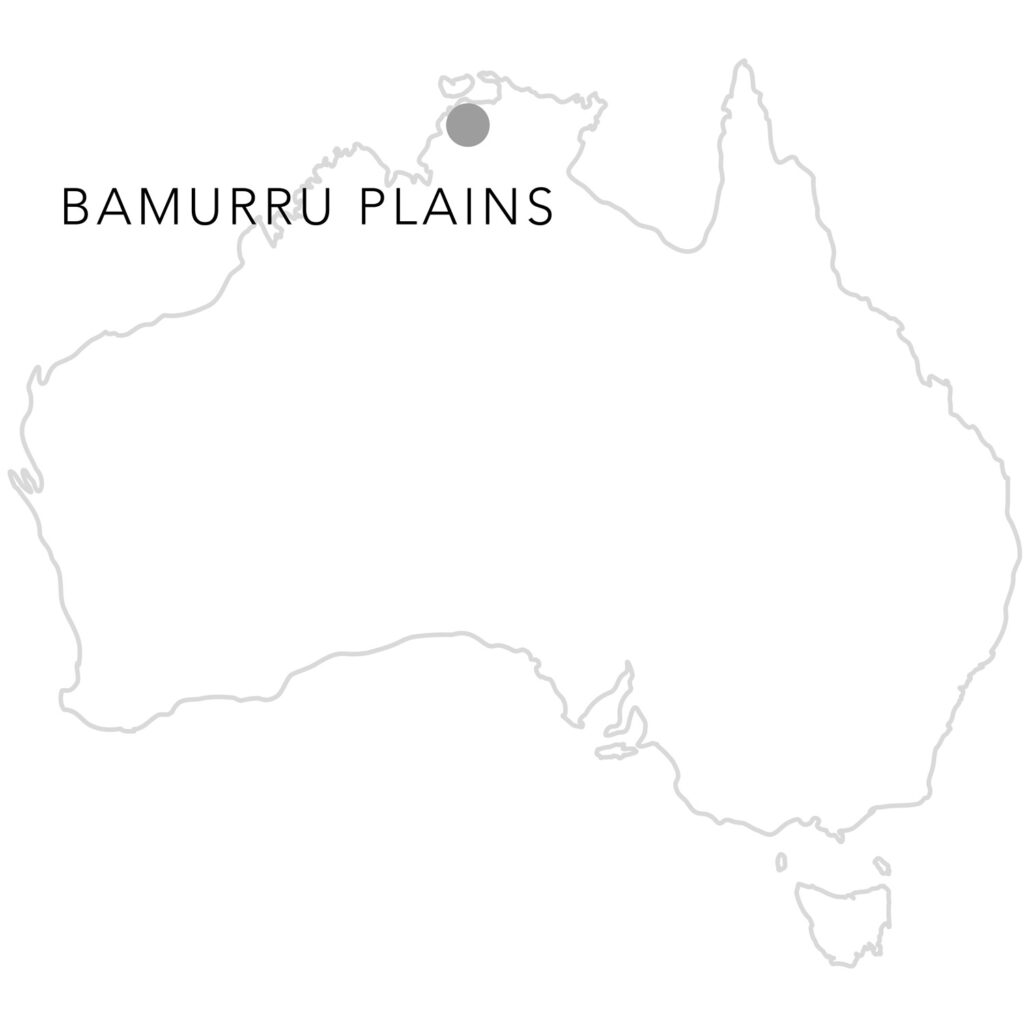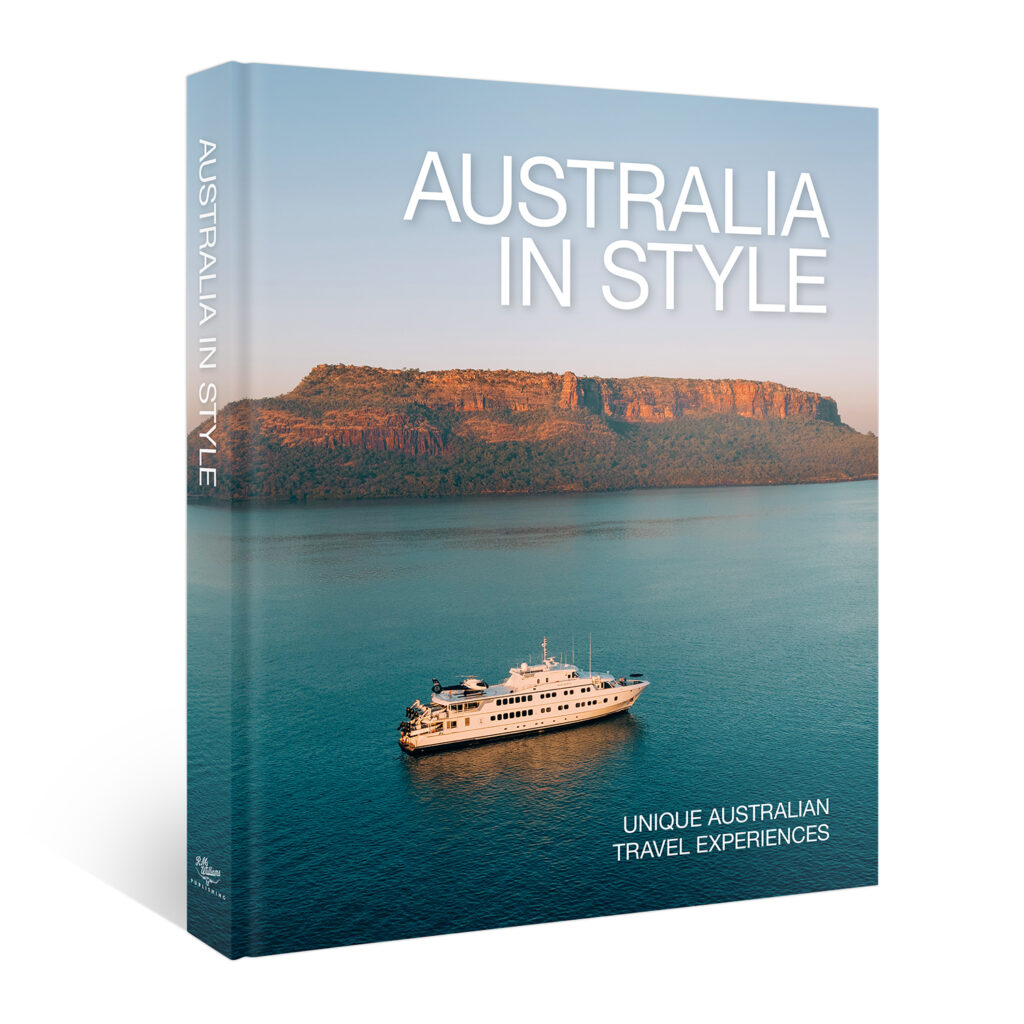The flat-bottomed, propeller-driven airboat zips through a green sea of sedges, wild rice and waterlilies. This aquatic wonderworld is the Australian equivalent of Florida’s Everglades – with wildlife to match. Large flocks of whistling ducks occupy the margins of these floodplains; further in, magpie geese take to the skies; jacana – also known as Jesus birds – walk on lily leaves; raptors patrol the sky above. Water buffalo plough through belly-deep water and crocodiles lurk just below the surface.
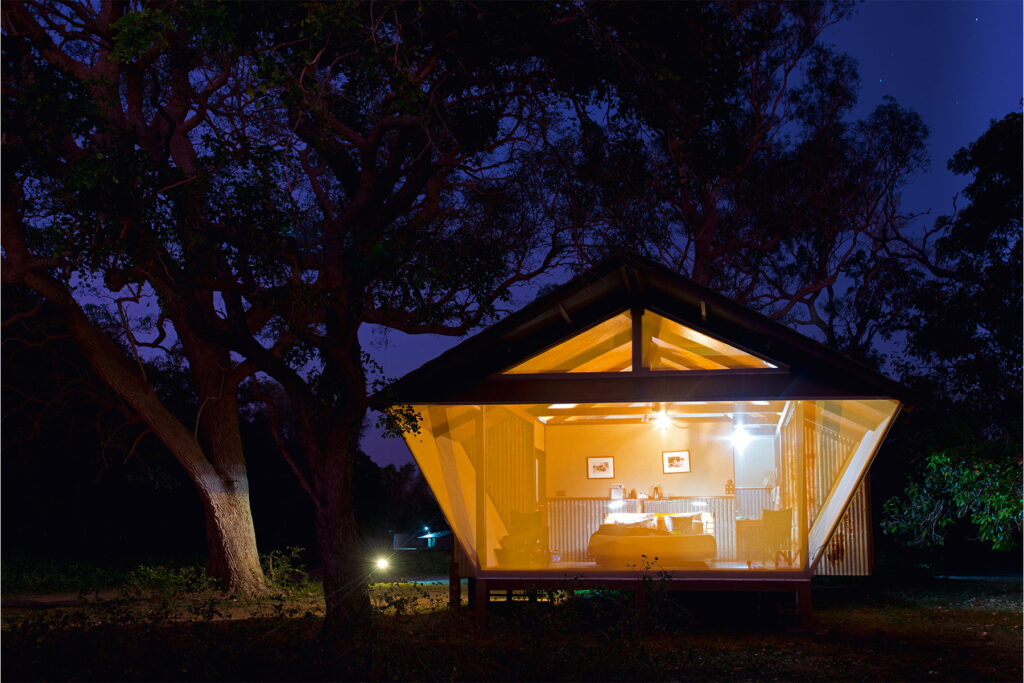
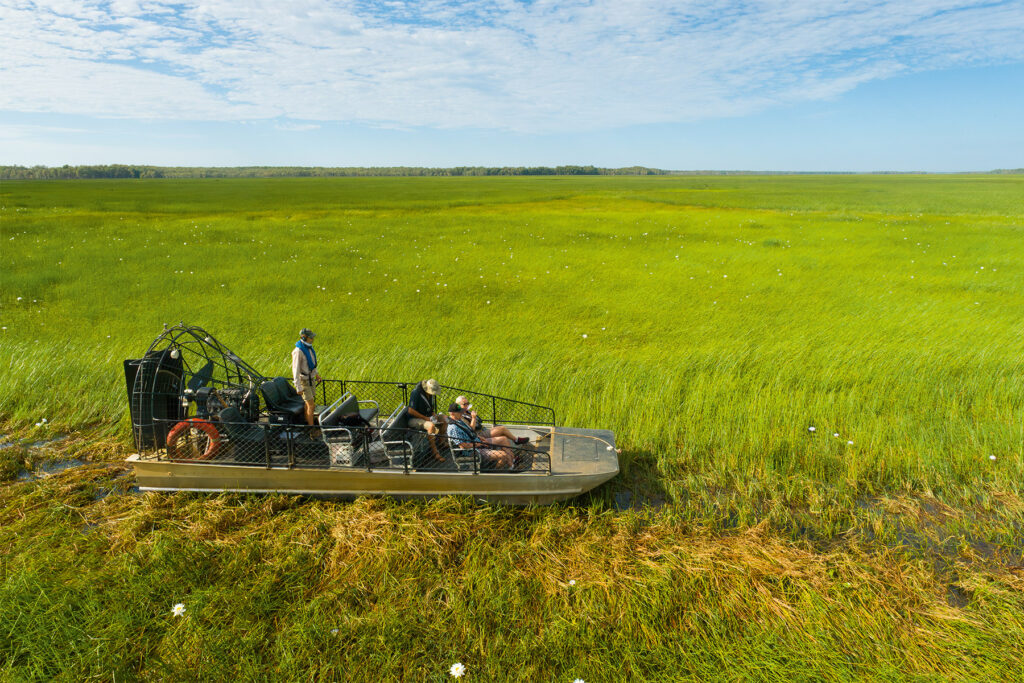
This natural abundance is the reason why most visitors come to Bamurru Plains, a remote, all-inclusive safari camp situated on a buffalo farm not far from World Heritage-listed Kakadu National Park. “Bamurru attracts people who love wildlife and enjoy seeing nature at its best,” says general manager Matt Bowen. “And, with more than 260 species of birds, Bamurru is a bird lover’s dream.”
In addition to the spectacular airboat tours, guests are treated to daily excursions through the surrounding savannah woodlands in open safari-style vehicles. The complexities of this tropical environment with all its small and large wonders inform the guides’ commentary.
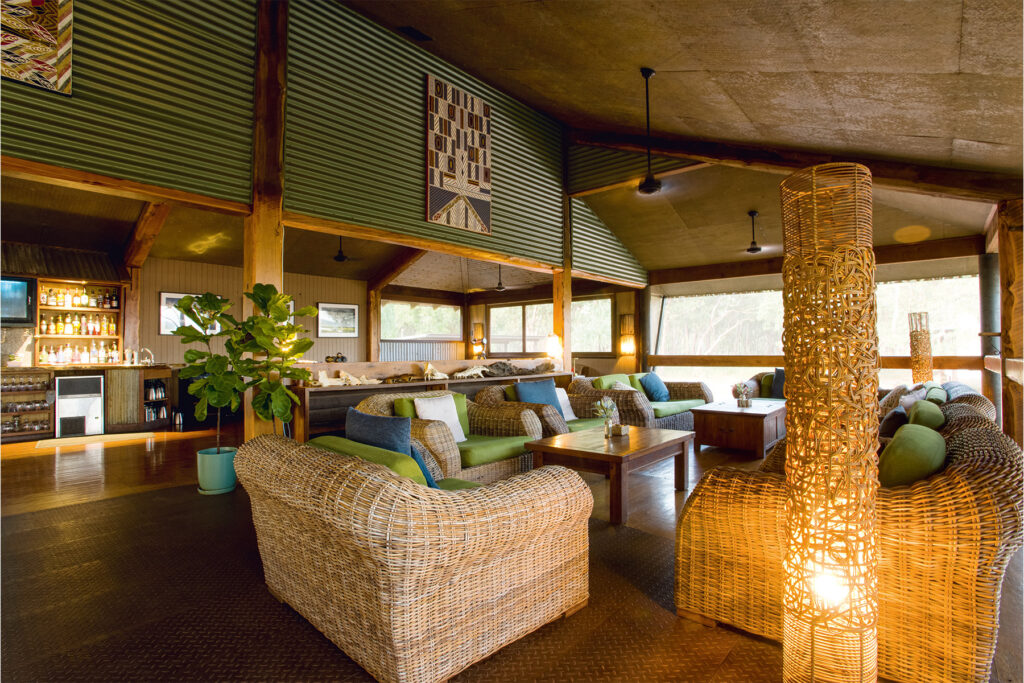
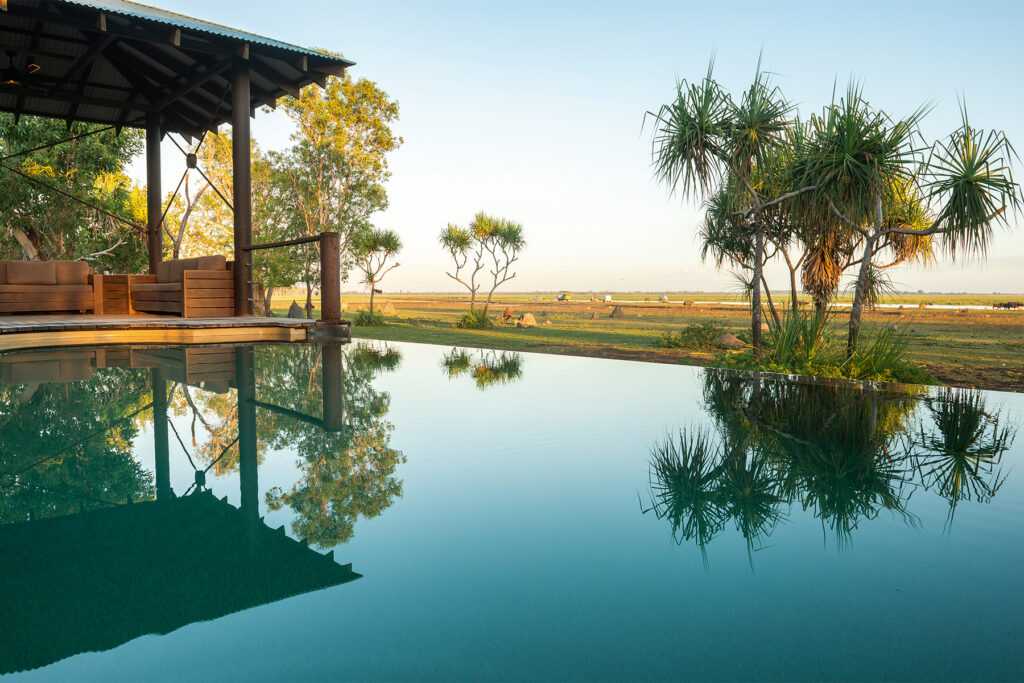
As nature is the main attraction, it’s fitting that the accommodation at the camp doesn’t remove guests from the wilderness outside. Perched under mature trees along the edge of the floodplains, the 10 bungalows and two larger lodgings – the Kingfisher Suite and the Jabiru Retreat – have mesh walls on three sides. This keeps the insects and creepy crawlies out without compromising panoramic views and the sounds of nature. Be prepared for a unique soundscape during the night, with a crescendo during the early morning hours.
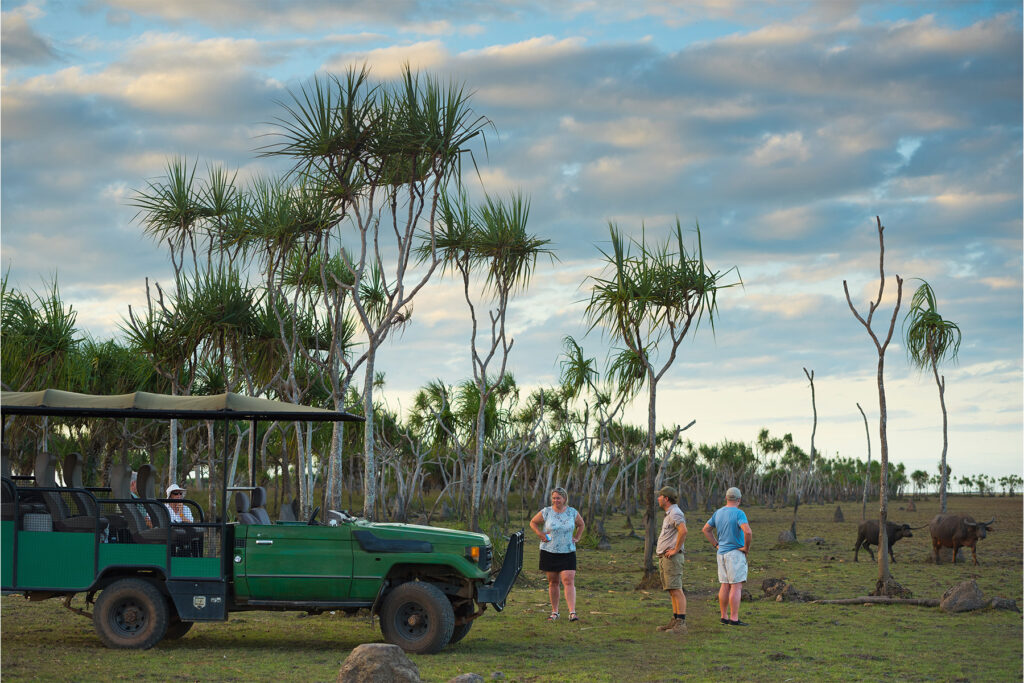
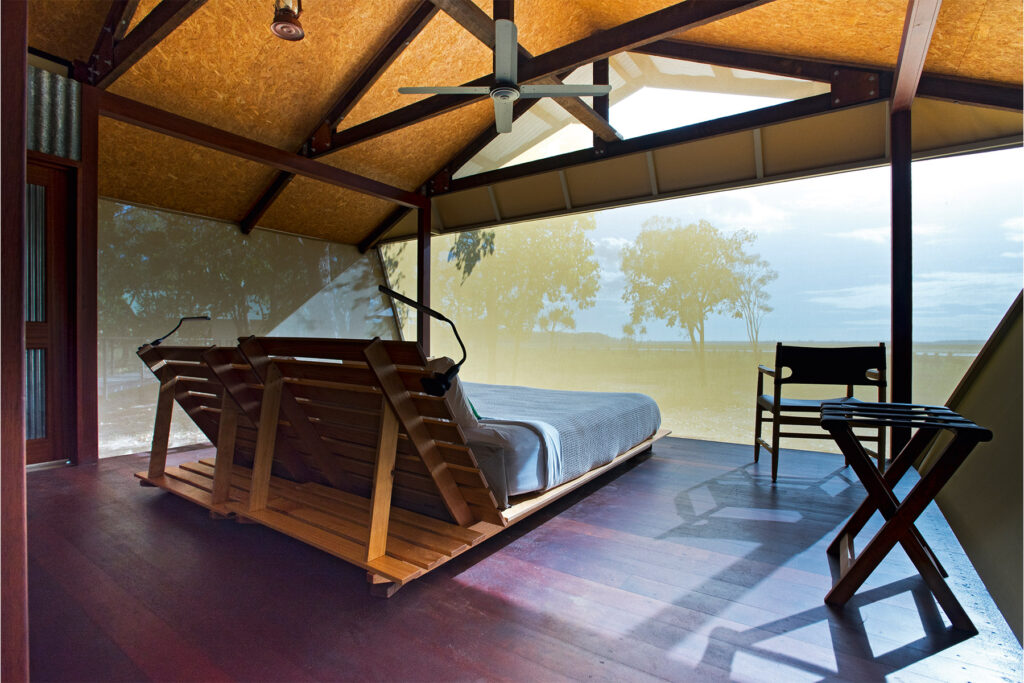
At meal times, the central lodge building with its infinity pool and large lounge area, becomes the social meeting place. There, two chefs cater for the wellbeing of their guests. Breakfast is an early affair and consists of a continental buffet, with cooked options available. Lunch is perfectly adjusted to the tropical climate with light salads topped with either kangaroo loins, duck breasts, Wagyu beef or lamb fillet. Before dinner, guests enjoy canapés by the pool. By the time dinner is served, the water buffalo and Banteng cattle have retreated from the edge of the floodplain into the forest behind the camp, and agile wallabies are out in force, grazing in front of the lodge. The cacophony from the corellas and whistling ducks is slowly starting to mute as birds settle for the night. Dinner, served at a large communal table, might start with an entree of pearl meat with local pickled lilies, gin-infused caviar and nashi pear. The main course could be duck breast, sweet potato puree, asparagus, native currants and native berry coulis, perhaps followed by a light raspberry sorbet.

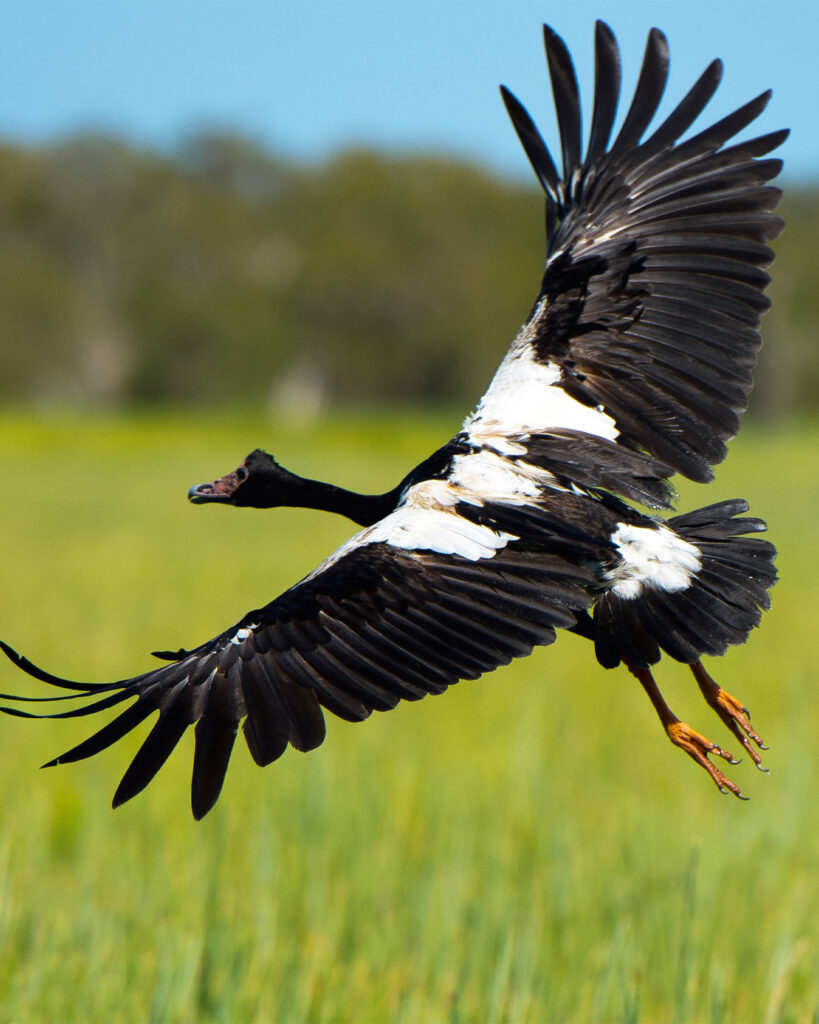
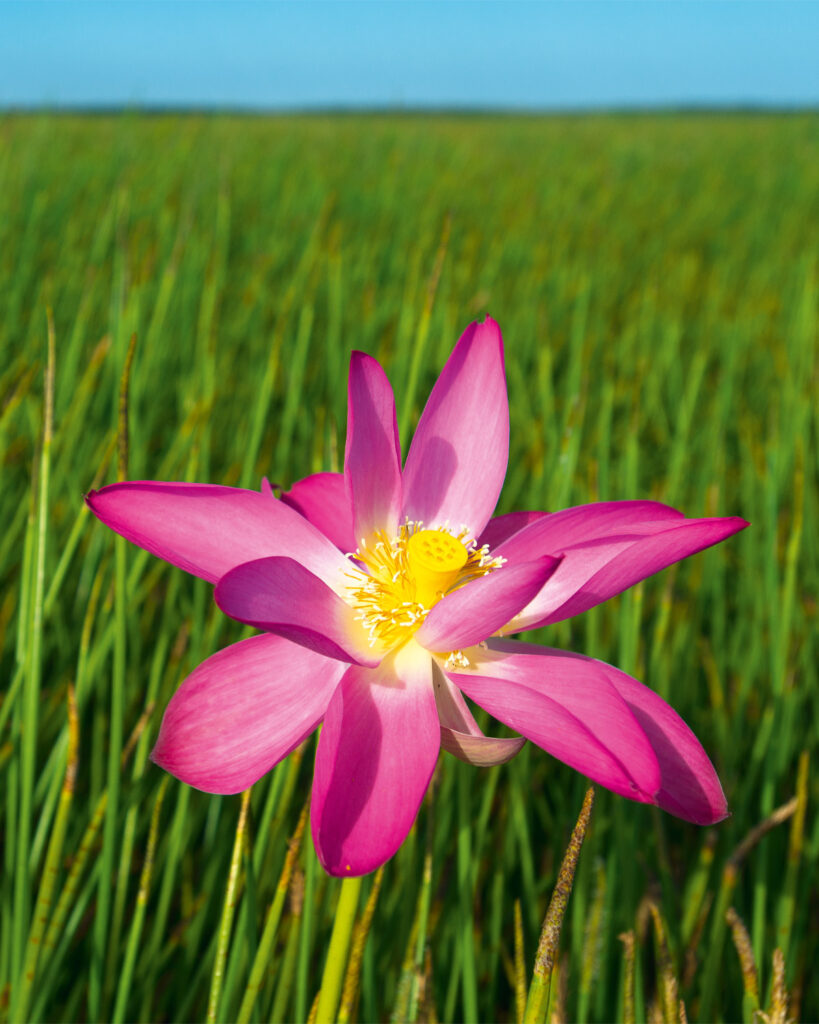
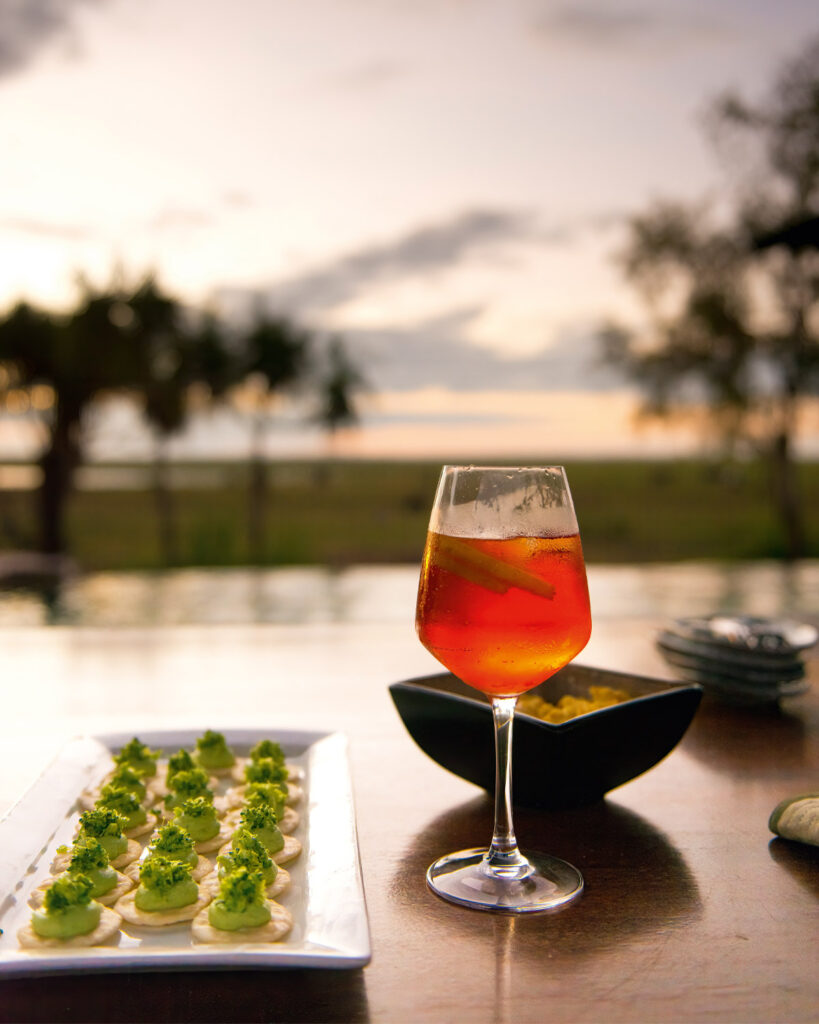
Bamurru Plains is open between March and October, which is the dry season. The experience during these months is very much defined by the wet-season weather. This is the time of abundance and renewal, of meteorological upheaval with near unbearable humidity, torrential rain and the occasional cyclone. When the weather has settled and the floods sufficiently receded, the safari camp opens. As the first guests arrive, a period of remarkable transformation begins. For long-term field guide John Matroussidis, this is part of the attraction. “The place changes all the time,” he says. “It’s a very dramatic land of extremes.” Regardless of when you visit Bamurru Plains, a unique and unforgettable nature experience is guaranteed.
